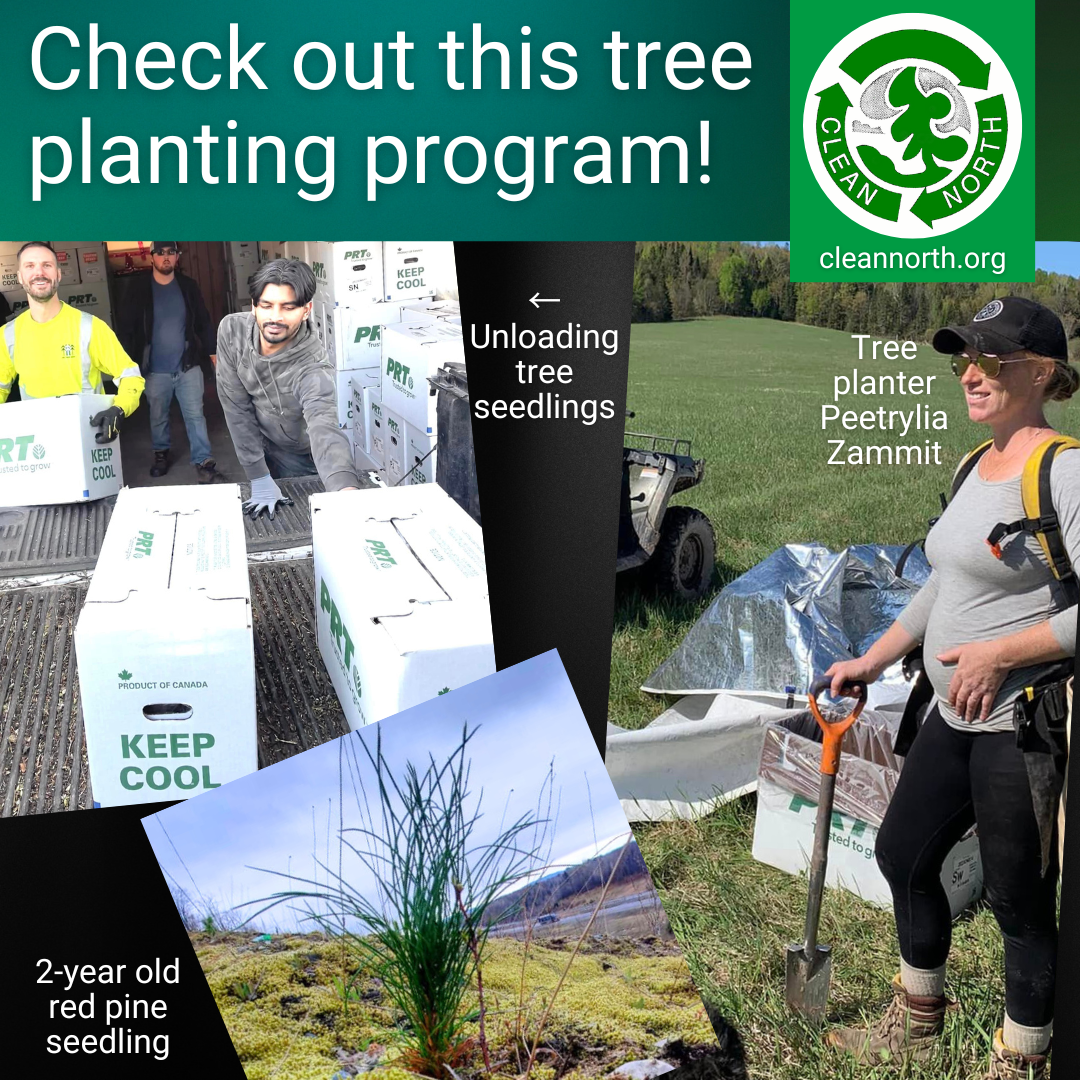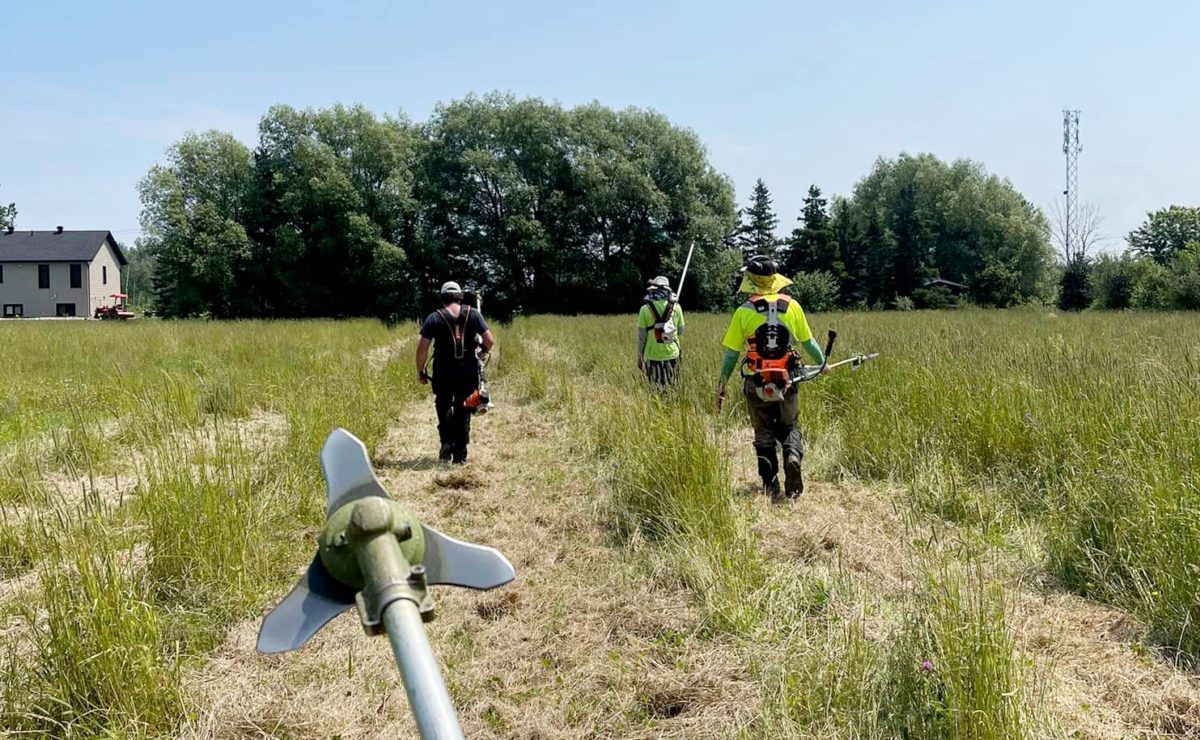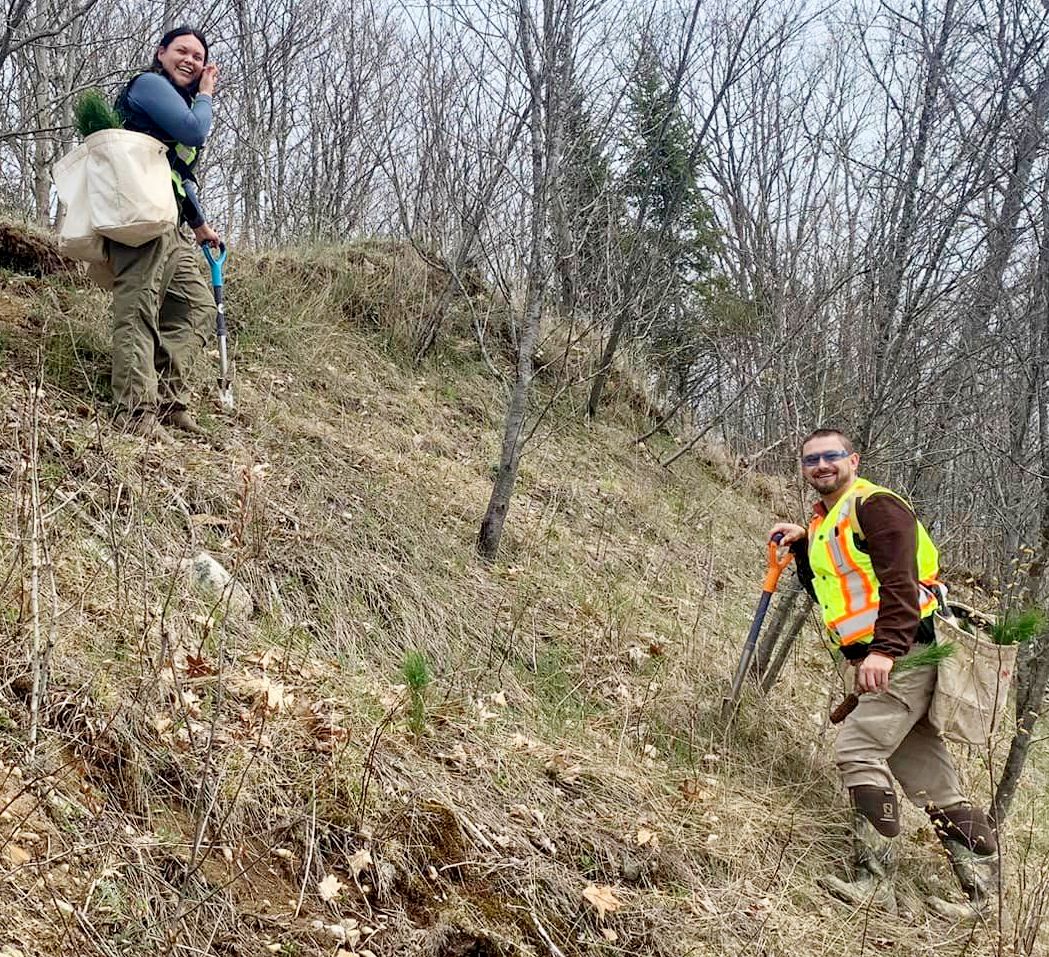This fab program could help you reforest it at low cost!

What if we told you that this year alone, more than 35,000 trees have been planted on private land inside the city limits of Sault Ste. Marie—and more than 100,000 trees were planted on private land in other parts of Algoma District? Would you believe us—or does this sound crazy?
Well, it’s 100% true!
This plethora of planting is all thanks to local forestry consultant Brent Attwell, his partner Peetrylia Zammit, and their company, Regen Natural Resources Ltd. They help landowners in our area access resources to re-forest their land. And most of the costs are covered, thanks to the Forests Ontario 50 Million Tree Program.
How this got started
“Our tree-planting work began in 2005 under a federal program known as Forest 2020,” Brent says. “The goal was to assess the potential for fast-growing trees to sequester carbon from the atmosphere.”
Around 2014, his work became fully funded under the 50 Million Tree Program. It’s designed to make large-scale tree planting more affordable for landowners and municipalities, with a myriad of benefits such as creating new wildlife habitat, enhancing land values, improving outdoor recreational opportunities, and fighting climate change.
Brent, who began his tree-planting career in southern Ontario in 1995, estimates that through his and his company’s efforts, more than 500,000 trees have been planted here in Algoma since 2005—at very low cost to landowners. Currently, at least 90% of the cost is covered, and the cost falls further if the landowner can pitch in with tasks like brush cutting to control plants that compete with young trees.

A crew cuts brush around young trees. Reducing vegetation that competes with tree seedlings can significantly improve tree growth.
How does the program work?
It starts with a free visit to the person’s property to assess if the land in question is a good fit for the program. “A lot of education goes along with that,” Brent says. “We offer advice on how to manage your land in a more sustainable way.”
The minimum area of land to qualify for this program is .6 acres, and at least 500 trees must be planted. “This year the smallest site was just over an acre, and the largest was about 15 acres,” Brent notes. “It was a total of seven properties within the city limits; 22 across Algoma. Most of the costs were covered!”
They’re generally looking at open land that is not suitable for farming. “We avoid taking prime farmland out of production,” Brent says.
Some people are doubtful about the benefits of re-foresting open land, but then…WOW! “About 10 years ago, one farmer was skeptical about planting trees on the part of his land that was not suitable for farming, but he finally agreed,” Brent says. “Fast-forward a decade, and he’s thrilled—because he’s seeing all kinds of wildlife.”
If you create habitat, wildlife will come.
Even people who don’t end up planting trees get advice on managing their property more sustainably. Brent himself has the problem of a lot of Scots pine on his property. Scots pine is an invasive species, so the goal is to get rid of it, but his approach is not to cut it all down at once. He is removing the trees slowly and over time, planting native species underneath to gradually convert the stand. This strategy minimizes collateral damage to the ecosystem (like erosion and incursion of invasive plants) that could occur if he suddenly chopped down all the overstory pines.
So what kinds of trees do they plant?
“We plant conifer species native to the area,” Brent notes. “Hardwood species are unfortunately trickier as lots of creatures love to eat hardwood seedlings.”
The species they will be planting on approved sites next year include white, jack, and red pine; norway, white and black spruce; tamarack; and eastern white cedar. The young trees must be grown from seeds that are genetically adapted to our area, which helps ensure the trees can handle Algoma’s conditions.
“OK, I have a few acres of land I’d love to reforest—where do I start?”

Tree planters from Garden River First Nation.
- Apply to the 50 Million Tree Program through the Forest Ontario site or
- Contact Regen Natural Resources Limited
Step 1 is a site visit to assess your land’s suitability for tree planting. For most people, the objective is environmental protection, and the area being planted is poor-quality open land. There’s no cost for the site visit, and at a minimum, you will get pointers on managing your land more sustainably.
If you are approved for the planting program, Brent will work with you to prepare a site plan, which generally includes a property map, number of acres to be planted, information about soil types and drainage, the species and number of trees to plant, and a schedule for planting and followup maintenance. The plan then goes to Forests Ontario for review and approval.
Then the magic happens—tree planting, all done by hand.
In addition to planting, they will do one mechanical tending (no herbicide spraying), and in years 2 and 5 will assess survival to measure planting success. Brent says survival has increased since they switched to larger (20 cm tall) seedlings but notes, “Survival depends a lot on the weather. Some of the recent very hot summers have been brutal on our planted trees. We are happy if we get 80% survival.”
Next year will be their biggest planting year of all—175,000 trees on more than 200 acres. “It’s usually around a half-dozen sites in the city limits each year,” Brent reports. “At some point most of the large sites in the city will be planted up, but we are not there yet.”
Questions about this program?
Contact Brent at Regen Natural Resources Limited.
SIDEBAR: You should also know about MFTIP
Another program for those interested in managing forests on their own land is the Managed Forest Tax Incentive Plan (MFTIP). This program, administered by the Ministry of Natural Resources, offers a property tax break for well-managed forest land in Ontario. To apply, you need a 10-year Managed Forest Plan, which helps ensure good forestry practices are used and stewardship principles are followed.
Want to know more? Check out this MNR page or contact Brent at Regen Natural Resources Limited.




